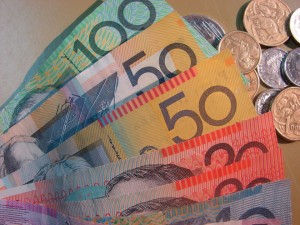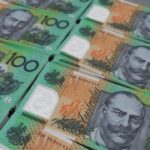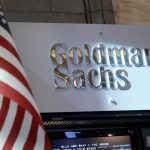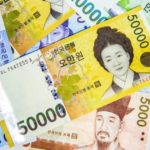 The Aussie traded little changed, but was poised for the biggest quarterly gain since 2011 against its US counterpart, before the Reserve Bank of Australia policy meeting tomorrow, when officials are forecast to refrain from lowering interest rates for a third-straight time this year.
The Aussie traded little changed, but was poised for the biggest quarterly gain since 2011 against its US counterpart, before the Reserve Bank of Australia policy meeting tomorrow, when officials are forecast to refrain from lowering interest rates for a third-straight time this year.
AUD/USD hit a session high at 0.9259 at 00:45 GMT, after which the pair trimmed advances to trade little changed at 0.9240, losing 0.09% for the day. Support was likely to be received at March 27th low, 0.9216, while resistance was to be met at March 28th high, 0.9295, also the pairs highest since November 21.
The Aussie headed for a 3.5% gain in the three months through March against its US counterpart, the best quarterly performance since 2011, as 27 of 33 economists in a Bloomberg News poll, predicted that RBA will refrain from lowering borrowing costs this year, while all of them forecast no change in the benchmark rate from the current record-low 2.5 percent at tomorrows meeting.
Aussies demand was supported after the Housing Industry Association reported today that nations new home sales surged 4.6% last month, after a 0.5% gain in January.
A separate report by the RBA showed that private sector credit expanded 0.4% in February, in line with analysts expectations and after a 0.4% gain in the previous month.
“I’d expect the Aussie to really tread water until tomorrow’s RBA,” said Sue Trinh, a senior currency strategist at Royal Bank of Canada in Hong Kong, cited by Bloomberg. “All focus will be on the RBA’s view of the exchange rate at these levels and this recent pace of appreciation, as well as any potential forward-looking language.”
The Aussie dollar was pressured after it became clear that Deutsche Bank AG has lowered its estimates for growth in China, Australias largest trading partner. The Chinese economy is predicted to expand 7.8% in 2014 and 8% next year, compared with previous forecasts for a 8.6% growth this year and 8.2% in 2015.
Meanwhile, the monthly business activity survey for the area of Chicago may show that the corresponding PMI slowed down to a reading of 58.5 during March from 59.8 in February. Higher than anticipated readings would provide support to the US dollar.
Greenback’s demand was pressured on Friday, after Thomson Reuters in cooperation with the University of Michigan reported the final reading of their index, a gauge of US consumer confidence, which came in at 80.0, below analysts’ expectations of an increase to 80.5, but slightly up from a preliminary reading of 79.9.
However, data also showed that consumer spending in the US rose in February by the most in three months as incomes increased, adding to evidence the economy is gaining momentum after the unusually harsh winter.
Consumer spending, which accounts for almost 70% of the American economy, rose 0.3% last month, in line with analysts’ estimates and after a 0.2% increase in the previous month that was smaller than previously reported. Incomes also advanced 0.3% in February, in line with analysts’ expectations and matching January’s gain, data by the US Commerce Department showed today.





